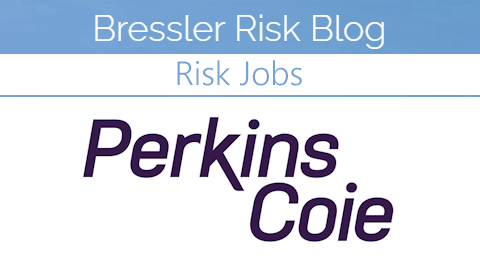Naver is South Korea’s digital backbone, spanning e-commerce, payments, blogs, and media. It holds unmatched regional intelligence but resists predictable extraction. Basic extraction scripts and static scraping pipelines often fail against its shifting architecture. This article covers the extraction of strictly public data only. The process does not require a login, and it respects Naver’s Terms of Service as well as robots.txt directives.
Naver.com data scraping delivers measurable benefits when aligned with professional engineering: accurate pricing signals, timely sentiment capture, and secure compliance with Korean data law, specifically PIPA (Personal Information Protection Act).
Partnering with professionals in the scraping Naver platform ecosystem determines whether enterprises gain insight or suffer disruption. Companies that collaborate with expert service providers like GroupBWT secure a partner in Naver scraping.
NAVER’s official Q2 2025 report confirmed revenue of KRW 2.9151 trillion, with commerce growing 19.8% and fintech 18.7%, underscoring the scale and dynamism that make Naver data essential for enterprises.
Why Scripts Collapse on Naver
Scripts assume stability. Naver thrives on change. It modifies payloads, hides tokens, and alters pagination without notice. Static pipelines decay silently, producing incomplete or distorted datasets. The business impact compounds: reports are slow, dashboards lag, and pricing adjustments miss critical windows.
Executives must recognize the financial stakes. Missed promotional windows erode margin within days. Inaccurate datasets undermine pricing models, leading to revenue leakage. A scraping approach designed as infrastructure, not code, protects against these risks.
Sustainable and Compliant Data Extraction from Naver
Sustainable extraction is less about speed and more about alignment. Adaptive systems use advanced technologies to capture exclusively public information while following platform rules. This prevents blocks while maintaining continuity. How to scrape data from Naver effectively means building systems that adapt in real time.
Compliance and Architecture as Strategic Shields
Architecture choices extend beyond engineering. Scraping activity must align with PIPA (Personal Information Protection Act), the Korean data privacy law, and platform terms. Ignoring compliance creates reputational and legal exposure. Executives cannot treat this as a technical footnote. It is a board-level risk.
Naver.com data scraping becomes sustainable when compliance is treated as a structural constraint. South Korea’s Personal Information Protection Commission (PIPC) 2025 Policy Plan emphasizes new safeguards for biometric and visual data, reinforcing that compliance in scraping projects is a legal obligation, not an option.
OECD’s 2025 analysis warns that restrictive data policies can shrink GDP by up to 4.5%, while open frameworks can add 1.77%, proving that compliance choices carry measurable economic stakes.
Practical Use Cases
Enterprises pursue Naver data for measurable outcomes. Four applications illustrate the stakes:
- E-commerce teams track promotions and product availability to recalibrate pricing daily. Delays distort competitive benchmarks and reduce pricing power.
- Media analysts extract blogs, news, and reviews to measure sentiment in real time. Slow capture produces reactive PR instead of proactive brand defense.
- SEO leaders monitor SERP changes on Naver to adjust keyword targeting. Missed updates result in ranking losses that directly raise acquisition cost.
- Brand Protection teams monitor Naver’s shopping platform to identify counterfeit goods or unauthorized sellers, protecting revenue and brand reputation.
- Market Research analysts track new product listings and public user reviews to identify emerging consumer trends and competitor strategies.
Each case ties scraping outcomes to financial consequences: margin erosion, churn risk, and lost share. Here, Naver scraping shifts from a technical task to a strategic backbone.
Automated E-commerce Monitoring for Legal Enforcement
Engineers at professional service firms, such as GroupBWT, have developed dual architectures that address different enterprise needs. The first is lightweight, suited for environments where frequent updates are critical but public APIs do not exist. It operates by monitoring changes on public pages and automatically adjusting its data collection process. This approach requires minimal infrastructure and delivers mid-scale insights.
The second is a decentralized system designed for scalability and resilience. It adapts to geoblocking by automatically routing activity through the relevant jurisdiction. This avoids a single point of failure, manages geographic restrictions, and scales throughput without triggering blocks. Enterprises use it when request volumes are high or when access must span multiple regions.
Both models prove that scraping Naver requires design variation, not a universal tool. One prioritizes adaptability for targeted tasks, while the other ensures resilience for large-scale operations. Together, they show executives that architecture is a lever for stability, compliance, and continuity.
A simple framework below highlights how centralized, decentralized, and dual systems differ in risk, resilience, and continuity.
| Architecture Type | Core Trait | Business Consequence |
| Centralized | Single node, uniform session flow | Single point of failure; all pipelines collapse together |
| Decentralized | Distributed nodes with independent sessions | Reduced collapse risk; continuity maintained even under platform change |
| Dual System | Lightweight adaptive + scalable decentralized combined | Flexibility for mid-scale access, resilience for enterprise-scale extraction |
Why Centralization Fails & Decentralization Wins
Centralized architectures concentrate risk. One layout change or flagged session halts all extraction. Naver identifies such uniform patterns quickly. Distributed systems, by contrast, separate exposure across independent points of presence.
Horizontal scaling is not a performance upgrade. It is a risk management strategy. When one session fails, others continue. The consequence is business continuity, not technical elegance.
Naver will not stand still. Its architecture evolves by design. Scripts cannot adapt at that speed. Enterprises must build adaptive, compliant systems if they expect data continuity. The business risk is more than broken code: it is delayed pricing action, missed inventory windows, and reputational damage from legal exposure.
FAQ
1. What is the total cost of ownership compared to an internal team, and how is ROI calculated beyond time savings?
An internal team carries salaries, infrastructure, proxy pools, and R&D overhead. Downtime compounds hidden losses. A professional service converts this into predictable OpEx, reducing cost volatility and shifting ROI measurement to forecast accuracy, inventory stability, and revenue lift.
2. What transparency and control does our team gain over the process?
Executives receive dashboards with task progress, alerting, and live data quality metrics. Logs remain accessible for validation. This transforms the service from a black box into a managed, auditable extension of the enterprise workflow.
3. When Naver changes its architecture, what is the guaranteed SLA for adaptation, and how does it affect data delivery?
Adaptive systems embed monitoring. The architecture is designed for fast adaptation to changes in public page structures, with SLA defining reaction time. Delivery cadence remains protected, and contract terms prevent additional charges for routine adaptation cycles.
4. How does the architecture handle unstructured or complex data such as blogs, nested reviews, or JavaScript-rendered content?
A professional architect is capable of processing dynamic pages that load content via JavaScript, seeing them just as a user would. To analyze unstructured data, such as blogs or reviews, these systems classify information and determine its sentiment. The architecture also automatically adapts to changes in page structure. This ensures that even the most complex content is properly converted into structured data without loss.
5. What does onboarding look like, from first discussion to the first data flow, and how many internal resources are required?
Kickoff workshops capture the scope in two days. Pilot configuration runs within a week. Full integration is complete in three. Internal teams commit hours, not headcount, preserving bandwidth for strategic priorities.
Looking for proven strategies used by famous business coaches?












